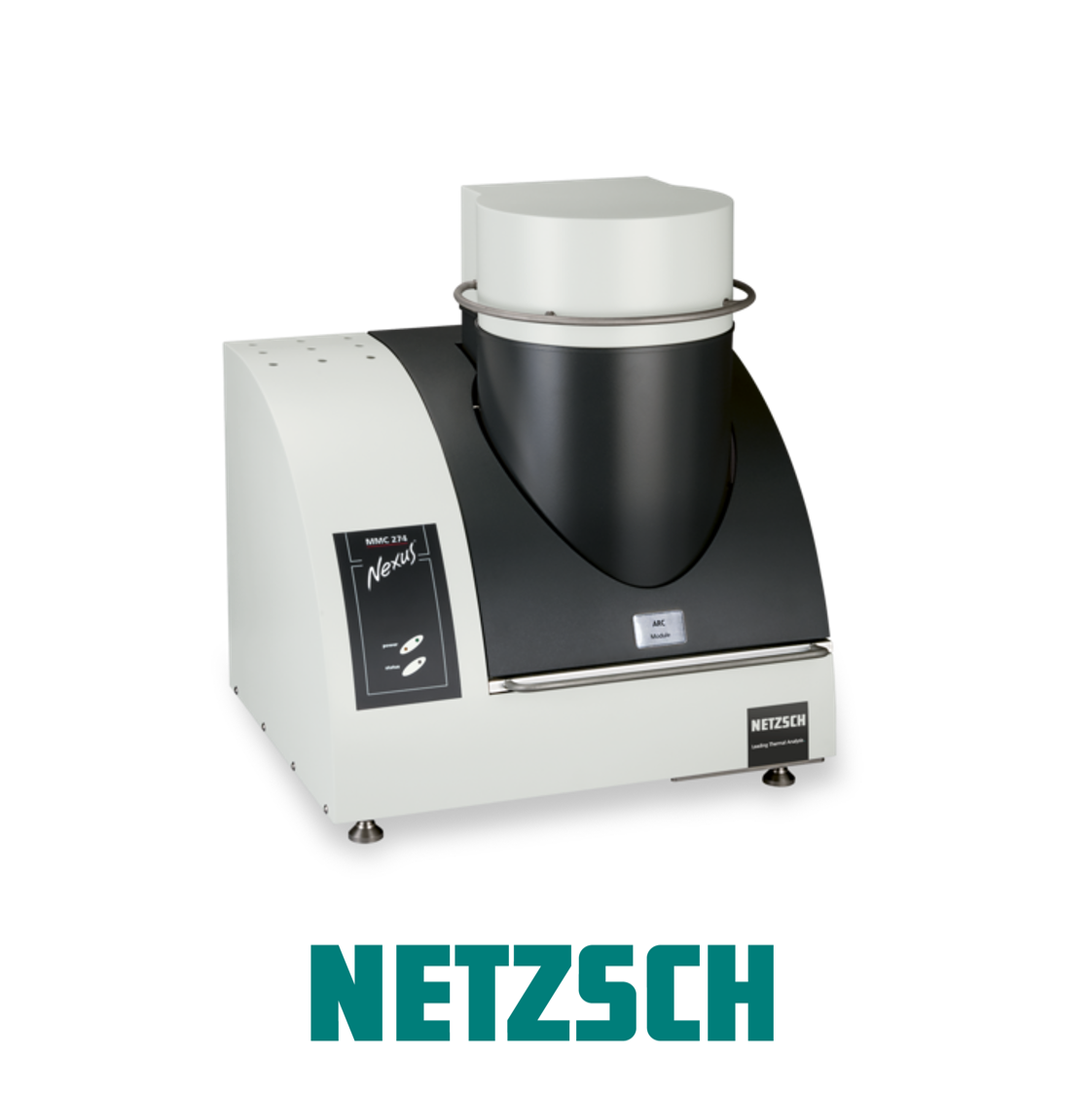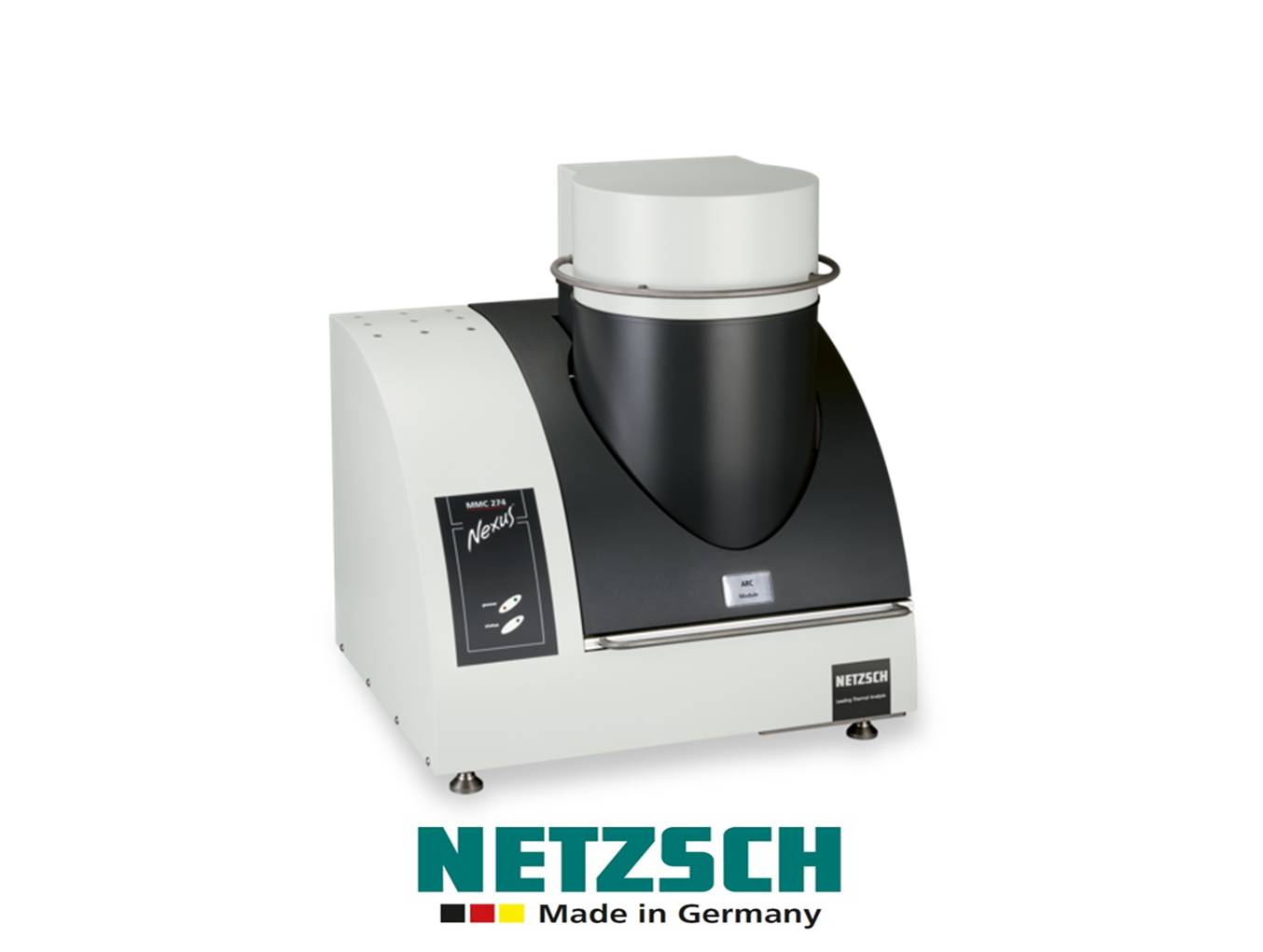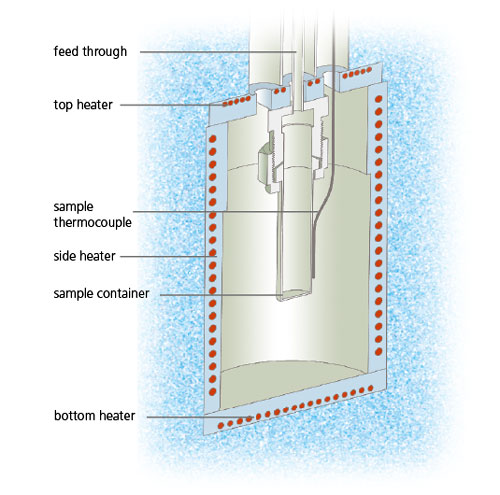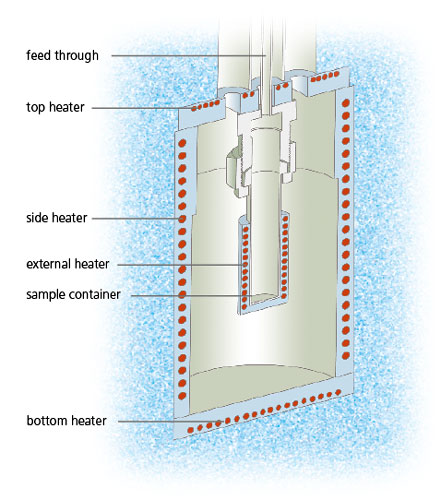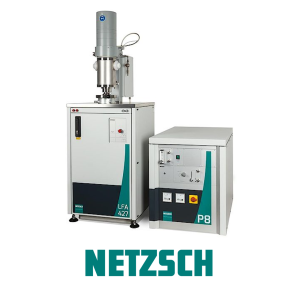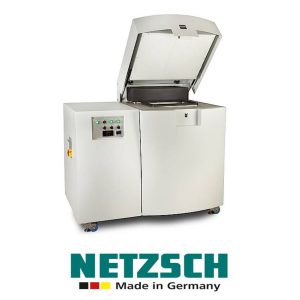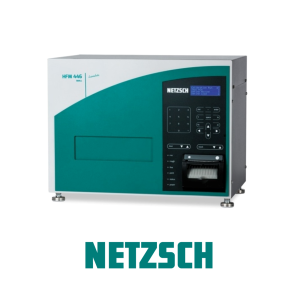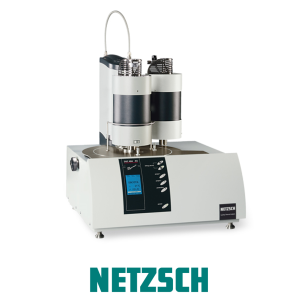תיאור
Key Features and Advantages of MMC 274 Nexus®
-
Multiple testing modes in one instrument for wide application coverage
- Scanning mode (constant power, constant heating rate)
- Isothermal mode
- Adiabatic mode with Heat-Wait-Search for process safety tests
-
Exchangeable calorimeter modules in one table-top instrument
- ARC module for safety testing
- External sample heater module for scanning tests as with DSC
- HT Coin Cell Module for coin cell characterization
- Wide temperature range up to 500°C
- Wide pressure range up to 100 bar (10 MPa)
- Various sample containers of different materials and volumes
- Proteus® software for the evaluation of onset, peak, area, etc., which may be combined with other thermoanalytical data in one plot
Key Technical Data
(subject to change)
-
Temperature range:
RT to 500°C
-
Temperature readability:
0.01 K
-
Heating rate:
0 to 5 K/min
-
Pressure range:
0 to 100 bar
-
Pressure readability:
0.01 bar
-
Sample container volume:
0.1 ml to 10 ml
-
Tracking rate – fast module:
up to 250 K/min
-
Tracking rate – standard module:
up to 50 K/min
-
Sensitivity tracking rate:
down to 0.002 K/min (depending on temperature range)
Applications
The MMC 274 Nexus® can be used for a wide range of applications in different areas
-
Chemical Processing Industries
- Process development and safety
- Kinetics, ΔHr
- Vapor pressures, VLE
- Storage and Transportation of Chemicals
- Energetic Materials Testing
-
Batteries
- Isothermal charging and discharging of coin cell
- Thermal stability of full cells
- Component testing (cathode materials, electrolytes)
- Physical Properties Measurements
Accessories
Coin Cell Characterization: the HT Coin Cell Module
Isothermal charging/discharging and scanning tests
The instrument can be coupled with a fully featured battery charger unit, which is also a cycler, tester and analyzer. Data generated from the MMC run is merged seamlessly with the data generated from the cycler/analyzer allowing for generation of battery data and thermal data to be plotted on the same axis. The user can perform discharge tests to evaluate battery condition, cycle batteries to improve performance and gain insight into overall battery condition in an isotherm or temperature scanning mode.
Process Safety: The ARC Module
Heat-Wait-Search and Pressure Tests
A defined volume of a sample (ml scale) is placed in a tube-shaped container. The container is surrounded by a sophisticated heating system. Depending on the operating mode, the surroundings of the tube vessel are controlled to the same temperature as the sample. If there is no temperature difference between the surrounding heaters and the sample, then all the heat generated by the sample stays inside the sample.
Key Features of the ARC Module
- Heat-Wait-Search tests for thermal runaway reactions
- Ramp mode for fast screening of unknown samples
- Pressure measurement
- Injection of liquid samples during the measurement
DSC-like Testing: The Scanning Module
Isothermal and Scanning Tests
Here, an additional heater is placed on the outside of the sample container. This allows for a defined power input and more accurate temperature control of the sample. The external heater is useful for running isothermal and constant temperature ramp tests, especially in those experiments where reaction energies are higher.
Key Features of the Calorimeter with the Scanning Module
- Scanning mode as with DSC via constant heating rate or constant power
- Isothermal mode as with DSC
- Pressure measurement
- Injection of liquid samples during the measurement


